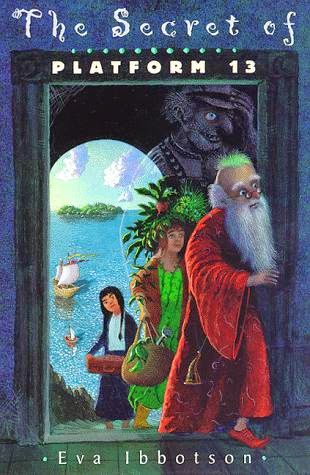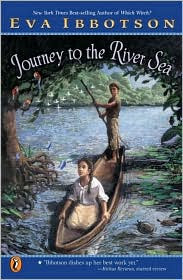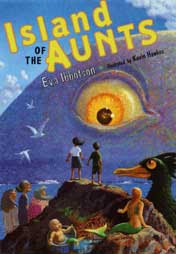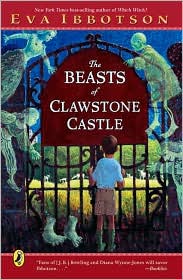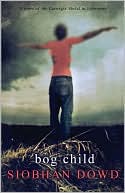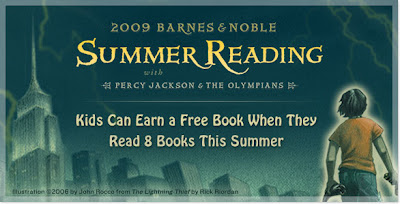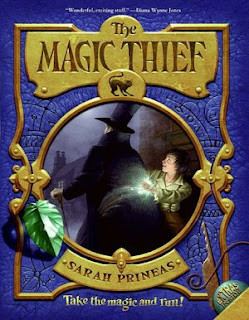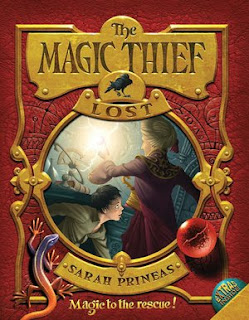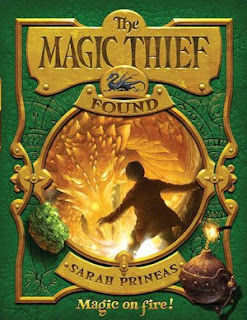Eva Ibbotson's The Secret of Platform 13 is a magical romp with creatures almost crawling out of the woodwork - or sewers, in the case of the merrow. Written a few years ahead of JK Rowling's Harry Potter and the Sorcerer's Stone, readers will wonder if she read Ibbotson's book as she was writing her own. There is a downtrodden but kind hearted orphan boy, an obnoxious mother and her spoiled son and, of course, a magical train platform. And, while the similarities between the Trottles and their treatment of Ben over their birth child, Raymond, are strikingly similar to the Dursleys, Dudley and their abuse of Harry, the precise coincidences end there. Ibbotson, as gifted a writer as Rowling, keeps her writing grounded in the realm of children's literature and is really more reminiscent of classic children's writers like the wonderful Edward Eager (Half Magic) who's works were first published in the 1950s and the magnificent E Nesbit, who published most of her books in the early 1900s. Like Roald Dahl, who's books can also be read as a social commentary at times, Ibbotson's writing does not have multiple layers of meaning. She clearly delights in thinking up magical creatures and placing them in sticky situations more than pondering the forces of good and evil and the nature of humanity.
The Secret of Platform 13 begins with a gump which was once known to be "grassy bump on the earth and in this bump was a hidden door which opened every so often to reveal a tunnel which led to a completely different world." The gump in question happens to be under now unused Platform Thirteen of King's Cross Railway Station where there is a "secret door behind the wall of the old gentlemen's cloakroom." Every nine years, for nine days, the door in the gump opens, leading to a long tunnel that opens onto a secret cove where a ship waits to take those who wish to an "island so beautiful that it took your breath away." The good and modest king and queen of this Island, humans who preside peacefully and happily over a realm of various creatures and spirits, have become parents for the first time and have hired the red headed, human triplets Violet, Lily and Rose to care for him. Deciding that she should not be a hovering sort of mother, the Queen agrees that the nurses will take the infant Prince through the gump and into London for the day when it opens. As soon as the ship sails from the Island toward the gump the Queen knows she has made a mistake, and indeed she has. Once in London, the three vigilant nurses let their guard down for a moment and the Prince in his basket is snatched by mrs Trottle just moments before the gump closes again for nine years.
Thinking that she cannot have a child of her own, the sickeningly wealthy Mrs Trottle decided to steal one, fly to Switzerland and come back a year later claiming the baby as her own. Once she, the baby and her aging nurse from her childhood, Nanny Brown, reach Switzerland, the horrible Mrs Trottle realizes that she is in fact pregnant with a baby of her own. As Raymond Trottle and Ben, the name Mrs Trottle has given the Prince, grow over the course of the nine years that the King and Queen wait to return to London and reclaim their heir, Ben outshines the spoiled, lazy Raymond in every way. Mrs Trottle grows to hate him and banishes Ben to basement of Trottle Towers where he works as an servant and is cared for by Nanny Brown, who has also been banished and threatened with jail if she ever tells about Mrs Trottle's kidnapping of Ben. Ben develops a genuine fondness for Nanny, the only person to show him any kindness, and shoulders his burden admirably, not knowing any different. Meanwhile, as the time for the opening of the gump approaches, the King and Queen set about to choose the Islanders who will return to London to bring the Prince home.
Along with Ben and Raymond, Odge, a young hag from the Island, is one of the main characters of The Secret of Platform 13. From a young age, Odge knows that she should be one of the group who returns to rescue the Prince. When she is not chosen she pleads her case with the King and Queen, telling them that she feels like she knows the Prince and has even picked out a magical gift from the Island to bring to him. Allowing Odge to join the rescue team proves to be a good decision when, once in London, the group assume that Raymond is the Prince and Ben just a helpful and friendly boy who doesn't seem ill at ease with magical creatures like the fey, the wizard and the troll who make up the rest of the crew. How the group deals with Raymond, going so far as organizing a spectacular show at midnight on Midsummer's Eve in Kensington Gardens to show him what he can look forward to if he returns home, and how Odge handles her intense dislike of Raymond coupled with her fondness for Ben, prove for an exciting climax that includes a nuckel and a harpy named Mrs Smith who looks disturbingly like Margaret Thatcher. And, of course, a happy ending.
Ibbotson's other books reviewed here include: Journey to the River Sea, a marvelous book with an English orphan with prickly, impoverished relatives living in the Amazon rain forest who take her in and the gorgeously magical Island of the Aunts. This review includes cover images for all of her books for young readers.
Ibbotson's other books reviewed here include: Journey to the River Sea, a marvelous book with an English orphan with prickly, impoverished relatives living in the Amazon rain forest who take her in and the gorgeously magical Island of the Aunts. This review includes cover images for all of her books for young readers.
